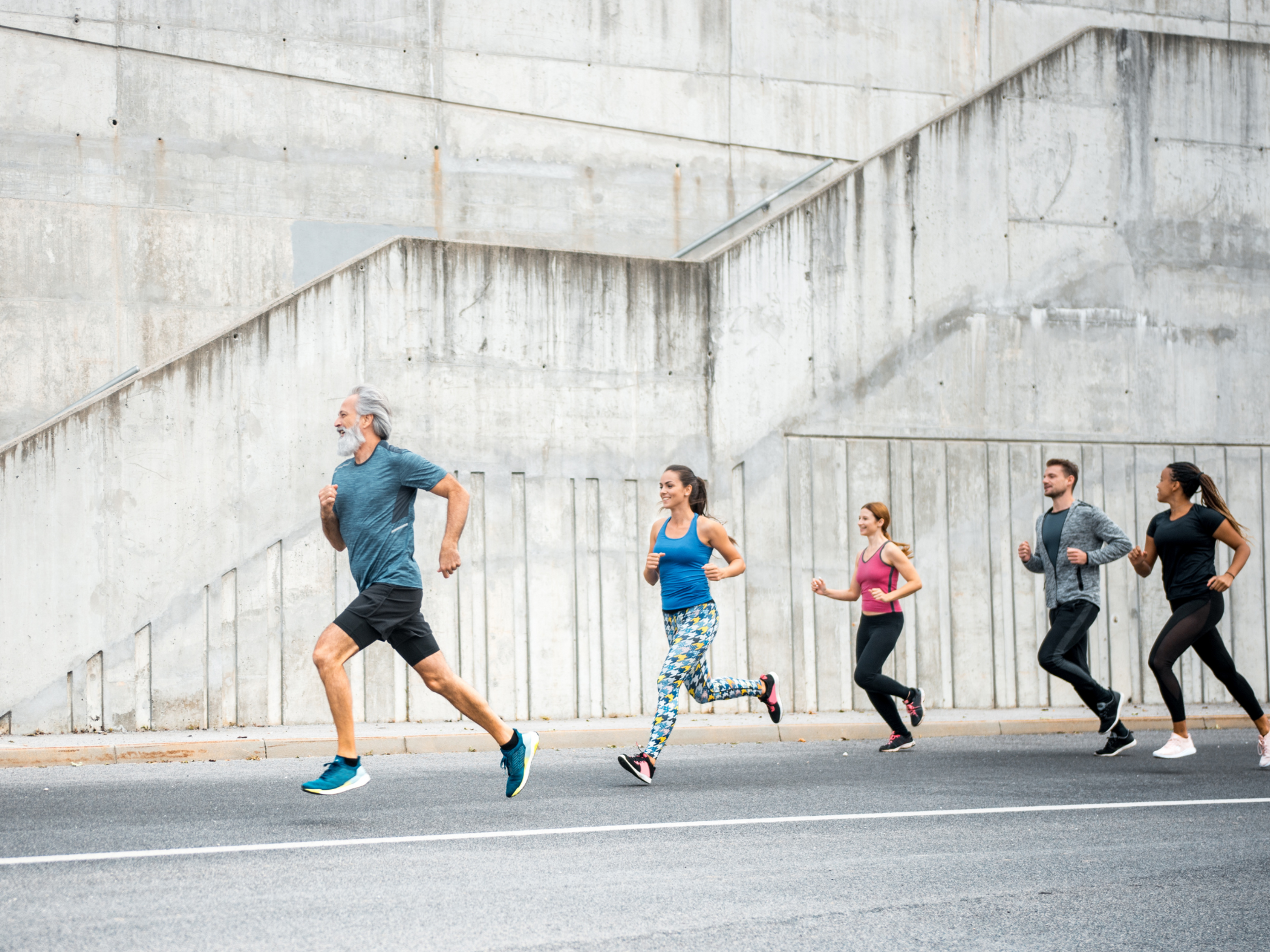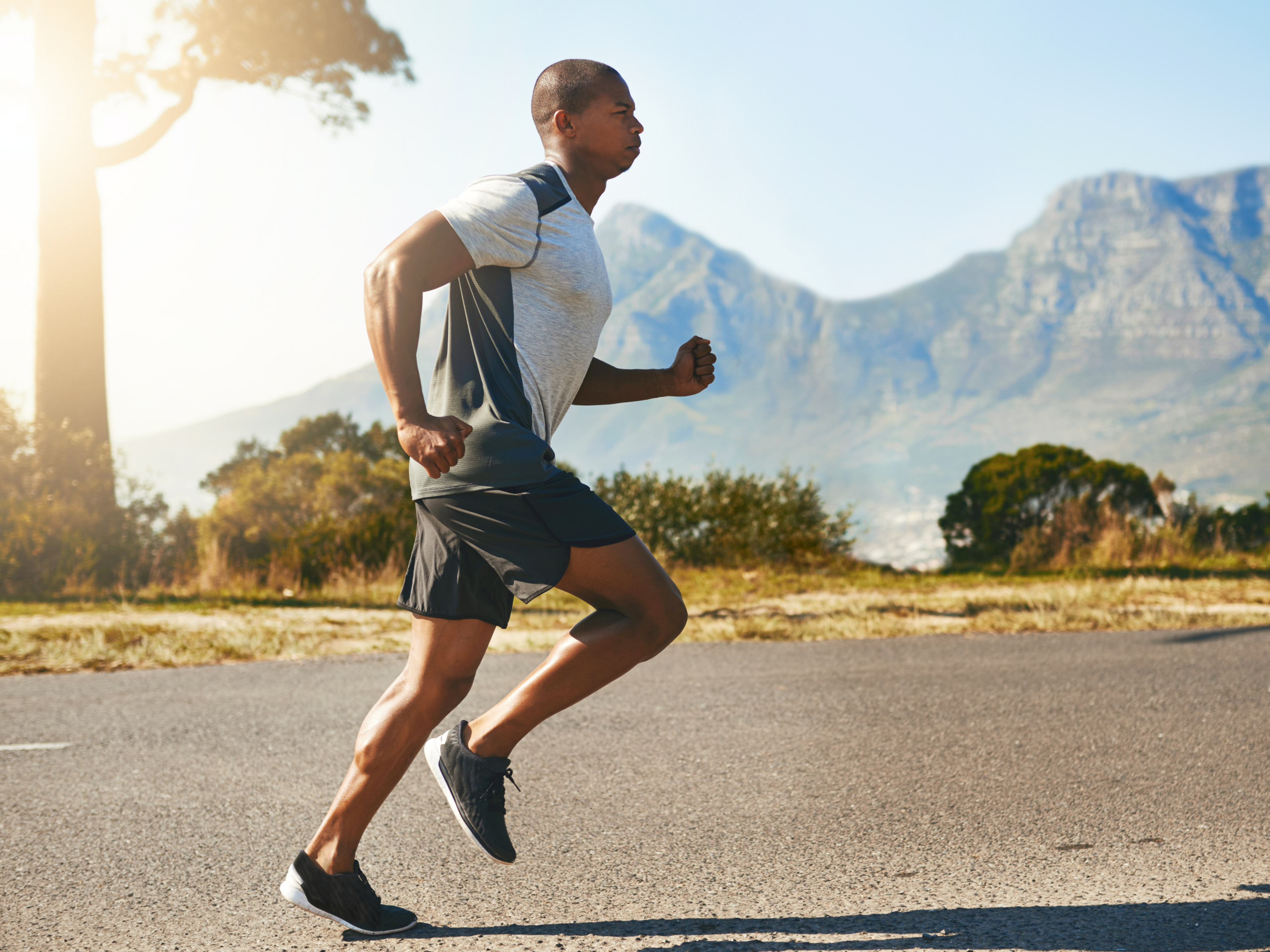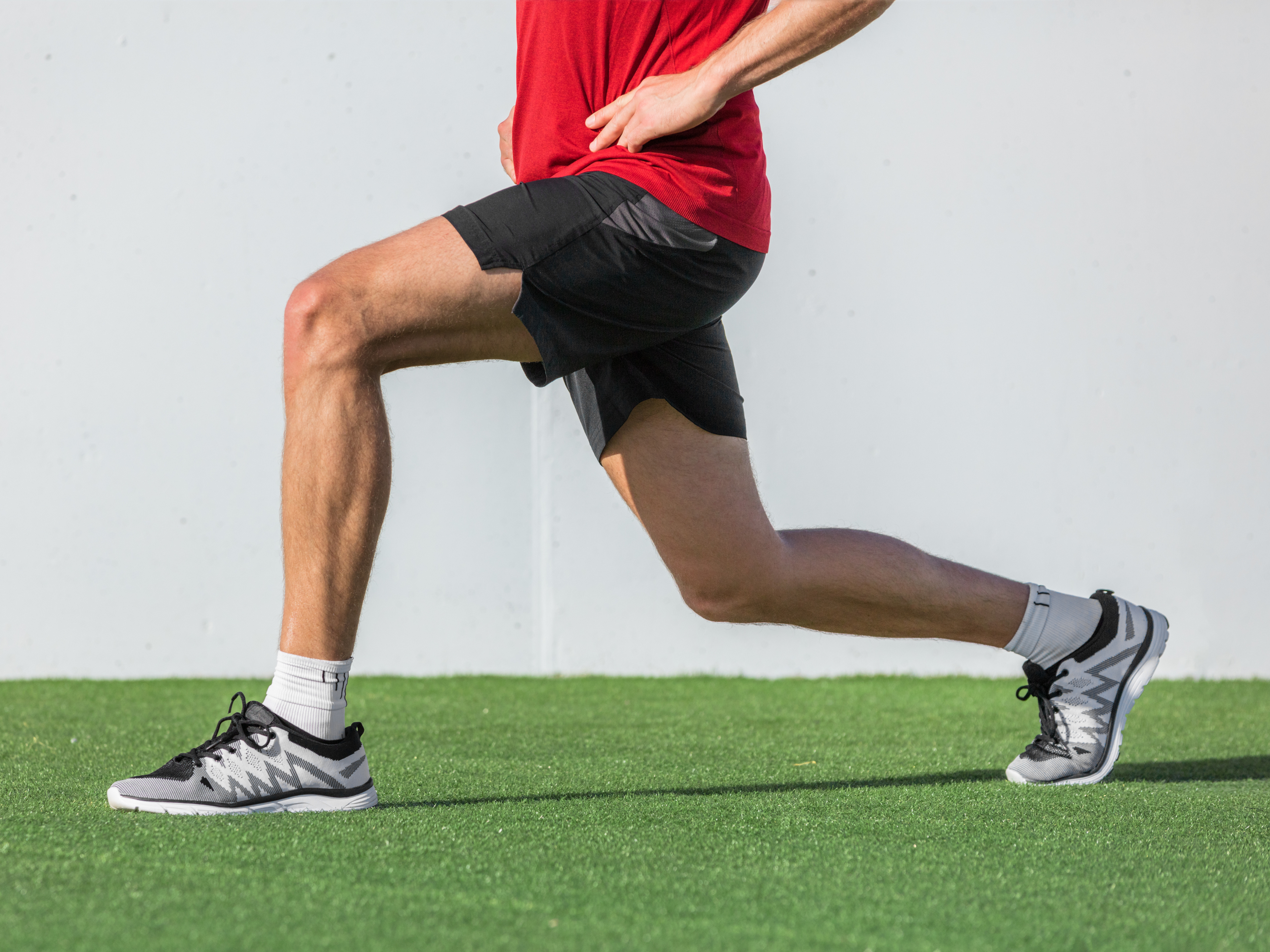Perfect your running form — common mistakes that lead to injury
Every runner is unique. The most obvious differences include the shape of our bones, our muscles’ ability to produce force, and the range of motion we can move through. So, it’s no surprise that we all run in a slightly different way.
Our legs all follow a similar pattern when we run, but with quite large variations. Research has shown that there is no such thing as perfect running form and that we tend to select a pattern that is most efficient for us.
However, there are specific elements in the running gait cycle that may predispose you to developing specific injuries when they are excessive.
Running form mistakes that may cause injuries
The most common running form mistakes that have been shown to predispose you to injury include running with:
- Excessive pelvic drop
- Excessive internal (inward) rotation of your leg (the one in contact with the ground)
- Excessive leg adduction (where your leg crosses over to the mid-line as it hits the ground)
- Spending too much time in contact with the ground
- Overstriding (placing your foot far out in front of you)
All of these movements are part of the normal running gait cycle. But, when they’re excessive, they can increase the strain on different parts of your body.
In research, the most common ways to improve all of the above elements are:
- Reducing overstride
- Increasing cadence
- Reducing cross-over gait
Interestingly, research has found that doing regular strength training exercises (like those included in our Strength and Mobility Plan for runners) can also improve running economy and reduce the ground contact time through increasing tendon stiffness, better muscle activation and coordination.
How to reduce overstride
What is overstride?
In running, overstriding means that your foot makes contact with the ground too far out in front of you, usually heel first. When your heel hits the ground in this position, it creates a braking force (like “slamming on brakes”) and increases the impact on your body.
Why it matters
Research shows that runners can reduce the overall force that goes through their body as well as correct excessive pelvic drop, inward leg rotation, and leg adduction by reducing their overstride.
This can help prevent and treat a wide range of overuse injuries, including:
- Anterior (front) shin splints
- Tib post tendonitis
How to assess it
You can check for overstride by filming yourself from the side while running on a treadmill.
Ideally, your foot should make contact with the ground near your center of gravity, slightly in front or below your trunk. It doesn’t matter if you land on your heel, mid-foot, or forefoot — it’s the placement relative to your trunk that matters.
If your foot lands far out in front of you, you’re likely overstriding. A running couch or physiotherapist can check this for you if unsure.
How to correct overstride when running
Several strategies can help reduce overstride. These include:
- Leaning forward with your trunk (as opposed to bending your back) while trying to land with your foot positioned more under your body
- Thinking about taking shorter steps
- Thinking about taking lighter steps, i.e., trying not to make much noise when you land
- Increasing your cadence or step rate (see how to do this below)
We find the first 3 strategies the easiest and most sustainable. Switching to a new cadence can be hard, and one often reverts to your preferred step rate when you get tired.
What to avoid
If you’re used to landing on your heel, don’t try and change to landing on your midfoot or forefoot. Heel striking is not bad. It’s when you heel strike with overstriding that it may become a problem.
You can cause a different injury (like Achilles tendonitis) by forcing yourself to land on your forefoot.
How to increase your cadence
What is running cadence?
Running cadence, also known as step rate, refers to how many steps you take in a minute when you run.
Why it matters
A slower cadence means more time in contact with the ground and a higher impact on your body. Even a 5% cadence increase can significantly reduce body impact forces when running. Research also shows a quicker cadence can help reduce the amount of pelvic drop and internal rotation of your leg.
It is worth noting that the evidence suggests that most runners naturally choose to run with a cadence that is most economical (uses the least amount of energy) for them.
An ideal cadence is currently thought to be equal to or more than 170 steps per minute, but this is unattainably high for many runners. The average runner has a cadence of 164 steps per minute. You may increase your risk of injury if you run with a lower cadence than this.
Changing your cadence may cause you to work harder and fatigue more quickly. So, experimenting with other changes first (like reducing overstride) may be a better option.
How to assess running cadence
Most running watches these days can tell you your cadence, but you can also count how many steps you take in 1 minute when you’re running at your preferred speed.
An ideal cadence is currently thought to be equal to or more than 170 steps per minute. A cadence of fewer than 160 steps per minute may increase your risk of injury.
How to increase your cadence
Research has shown that it is best (and more sustainable) to increase cadence only a little at a time. You can download a metronome app to your phone and set it to 5% quicker than your current cadence.
For example: If your current step rate or cadence is 160 steps per minute, set the metronome to 168 beats per minute.
Then, do your regular training runs but try to incorporate 1 or 2-minute intervals at this new cadence. Of course, you won’t be able to do an entire run at this rhythm immediately because it will feel like a hard effort. But keep practicing, and it will get easier.
What to avoid
Some runners tend to run faster when they increase their cadence, but this isn’t the correct way. The idea is that you should run at the same speed but just take more steps. By taking more steps, you decrease the time you spend in contact with the ground, reducing the impact forces.
How to correct cross-over gait
What is cross-over gait?
Cross-over gait refers to a narrow running gait pattern. When a person runs with a cross-over gait, they may appear to be running on a tightrope or thin line.
Why it matters
When your leg crosses in (adducts), it can cause pinching in your hip joint, increase the strain on your knee, pull your IT band tighter and cause your foot and ankle to roll in (pronate) excessively. This may predispose you to developing injuries like IT band syndrome, patellofemoral pain syndrome, gluteal tendinopathy, and shin splints.
How to check for cross-over gait
Signs indicating you’re running with a cross-over gait or your legs are moving too close to the midline include:
- You notice your ankles or knees are knocking each other while running, or
- There’s no space (not even a little gap) between your thighs while running. You can check for this by filming yourself from behind while running on a treadmill.
How to correct it
Some of the cues that may help to correct a too-narrow gait pattern when you run include:
- Trying not to kick yourself or let your ankles touch
- Trying to keep your knees slightly apart (10cm or 3 inches) and pointing forward
What to avoid
Be careful not to overcorrect by widening your stance too much. Usually, you only need a minor correction to make a difference.
Want more help with your running? Check out the training plans in the Exakt App. It contains evidence-based strength and mobility workouts to help you run strong and injury-free. If you tell the App your running days, it will schedule your workouts to optimize recovery.


